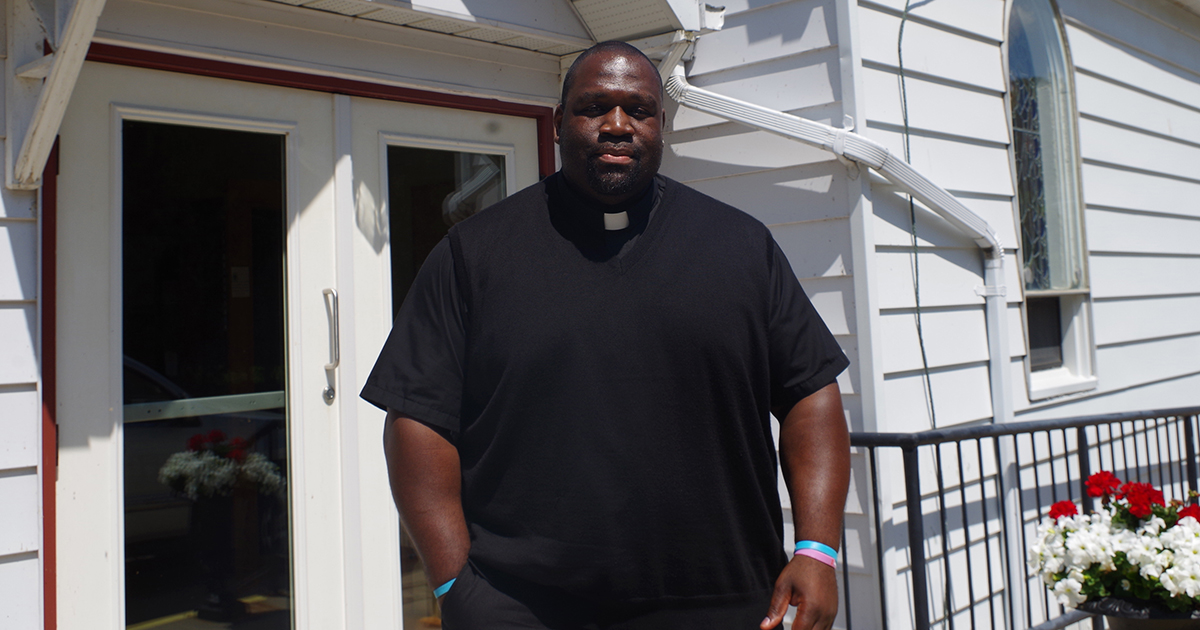In the beginning was the Word. Then there was the Music.
Bound to the Word is an innovative experiment within the Anglican Church of Canada that made its debut last Advent in the Diocese of Huron. It is a “call-and-response” style of worship that brings together spoken homilies and musical accompaniment.
Now its chief architect, the Rev. Steve Greene, is hoping to see congregations across the country—particularly youth—try out this different form of worship, tinkering as necessary to suit their own contexts.
“The whole goal is for the priest in each church to say, ‘Hey, yeah, I’ll try this out,’” Greene said. “‘Yeah, my youth like spoken word, they like music, so let’s incorporate both and therefore challenge the congregation to hear differently on the preaching of the Word.’”
Inspired by his love of the call-and-response African-American preaching style, Greene organized a pair of events in December 2017 that brought together four preachers from different denominations with pianist Angus Sinclair, first affiliate cathedral organist at St. Paul’s Cathedral in London, Ont. and backing musician for The Three Cantors. In addition to Greene, the preachers included Andrew Rampton, a deacon and graduate student in the master’s of theology program at Huron University College; Pastor Susan Boddaert of Hillsburgh Baptist Church in Toronto; and Pastor Karl Thomas of Impact Community Church in London.
The Bound to the Word events took place in two locations, one at Trivitt Memorial Anglican Church in Exeter, Ont., where Greene serves as assistant curate to the rector, and the other at Bishop Cronyn Memorial Church in London. Each preacher was given a scripture passage for a different week of Advent. After lighting a candle, each built a homily around that week’s gospel reading, connecting it to an Advent theme such as hope or love.
Throughout each homily, Sinclair would play music to complement the preacher’s words and individual style. For example, when Rampton spoke, the pianist would respond by playing traditional English Advent hymns. During Greene’s homily, his playing took on a more energetic gospel style.
“I can recall a particularly great improvisation on ‘Once in Royal David’s City’ toward the end of my sermon, which was really splendid, whereas when Steve was preaching—as is totally appropriate to Steve’s style—the improvisation from Angus had a much more jazzy and gospel feel,” Rampton recalled.
“Pastor Karl was preaching, and his preaching style relies a lot on weaving the theology in with fairly colloquial stories. He spent a lot of time preaching about a dog that he owned— and so Angus’s style of music went back and forth between a sort of classical piano style of improvisation, and a much more sort of illustrative musical commentary on the life of this dog and what was happening in the story.”
While Rampton would preach and stop, allowing Sinclair to respond with musical commentary, Greene and Thomas gave the pianist free rein to improvise under them throughout their homilies. Pastor Boddaert, in the intervening time, adopted something of a halfway approach, referencing specific pieces of music during her homily for Sinclair to play while he was able to improvise in between.
Along with dialogue between preachers and musician, the call-and-response also extended to those sitting in the pews. In both Exeter and London, members of the community who had accepted the invitation to attend regularly chimed in to affirm the preacher’s message.
“I’d have some questions and have a response to them and say an ‘Amen’, or whatever it is in their hearts to speak and proclaim,” Greene said. “It was always a constant dialogue. The community with me, the community with Angus, Angus with me—it was a constant dialogue with all three parties.”
Reactions to Bound to the Word were largely positive, from both the preachers and the congregations.
“The commentary from the congregation in both sessions was that they were really interested to hear different preachers, especially from different churches, and to be exposed one after the other to different styles, different traditions, different ideas, and that it was interesting to hear homilies with a shared theme of Advent one after the other, and to be able to put them in conversation with each other,” Rampton said.
“They all commented on how interesting it was to have a musician work with the preacher as part of the preaching, rather than one happening and then the other happening […] There was a good-natured affection to the thing from the start.”
Speaking personally, he added, “I thought it was a lot of fun. […] I enjoy preaching and I always look forward to doing it, but I also really enjoy hearing preaching. […] I don’t think many preachers get to work as part of a team of preachers very often, and that was a really interesting, rewarding experience.”
With a successful trial run under his belt, Greene is now looking to encourage other congregations to try the Bound to the World format.
As the official storyweaver at the upcoming Canadian Lutheran-Anglican Youth (CLAY) gathering in Thunder Bay, he is pondering the idea of incorporating Bound to the Word in some way. However, Greene makes it clear that much of the success relies on the presence of a talented musician of Sinclair’s calibre.
“To have Angus is critical for the event and for the ministry. […] I’d love to do it in CLAY,” Greene said. “It’d be a great opportunity to have 800 kids and youth there to hear it, but we’ll see. I do want to bring it. It is on my radar.”
